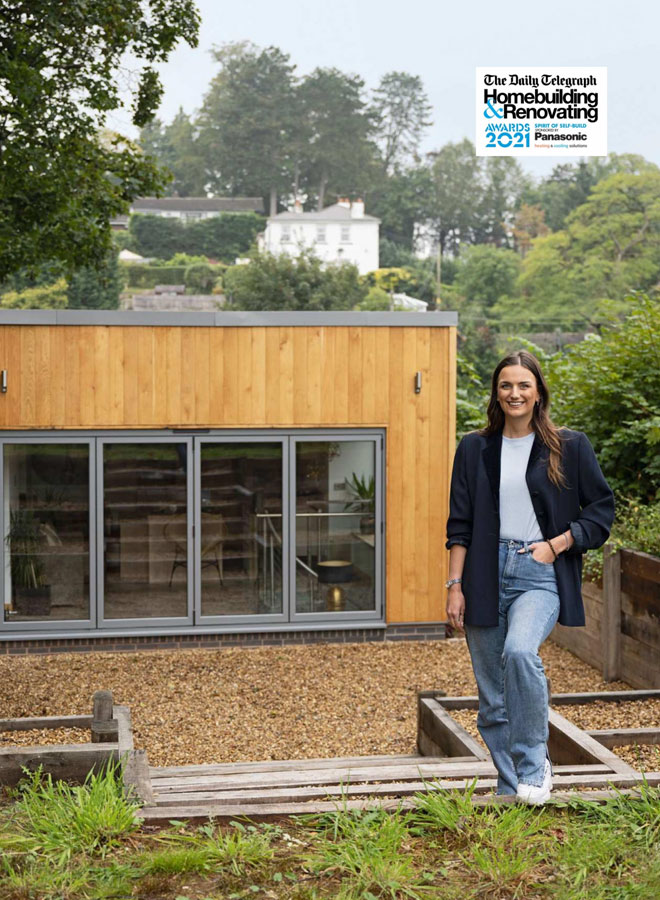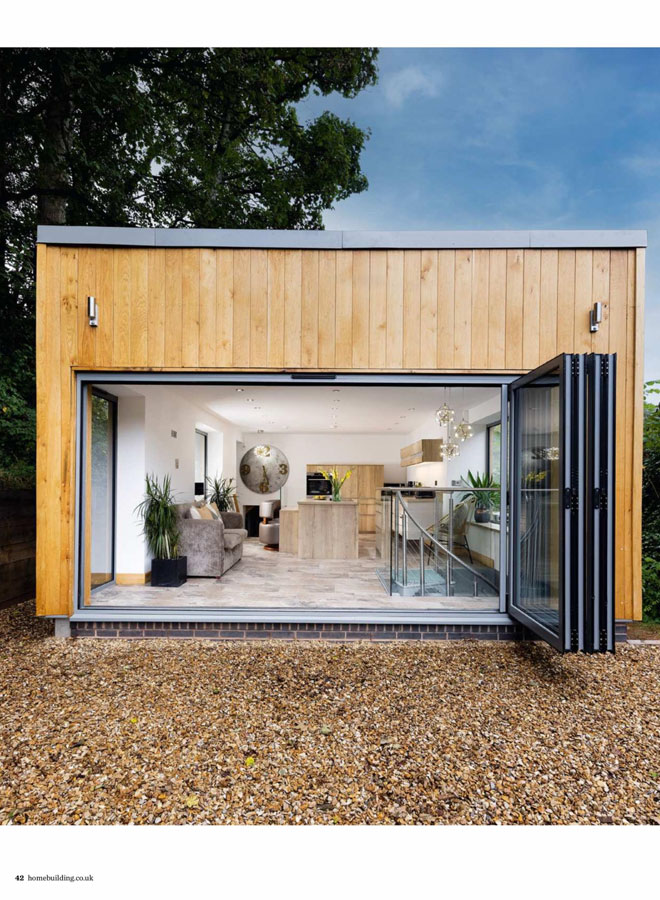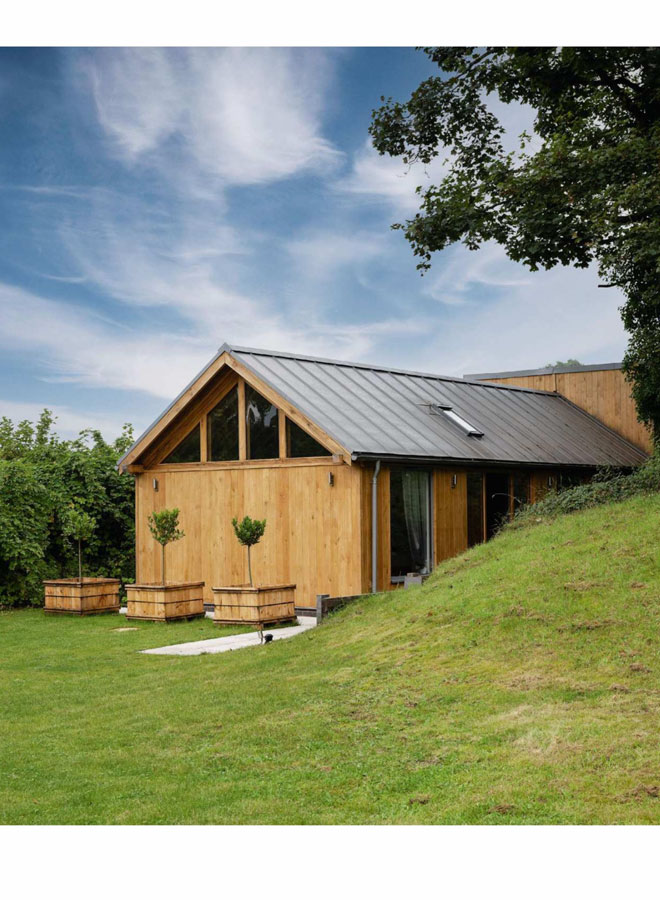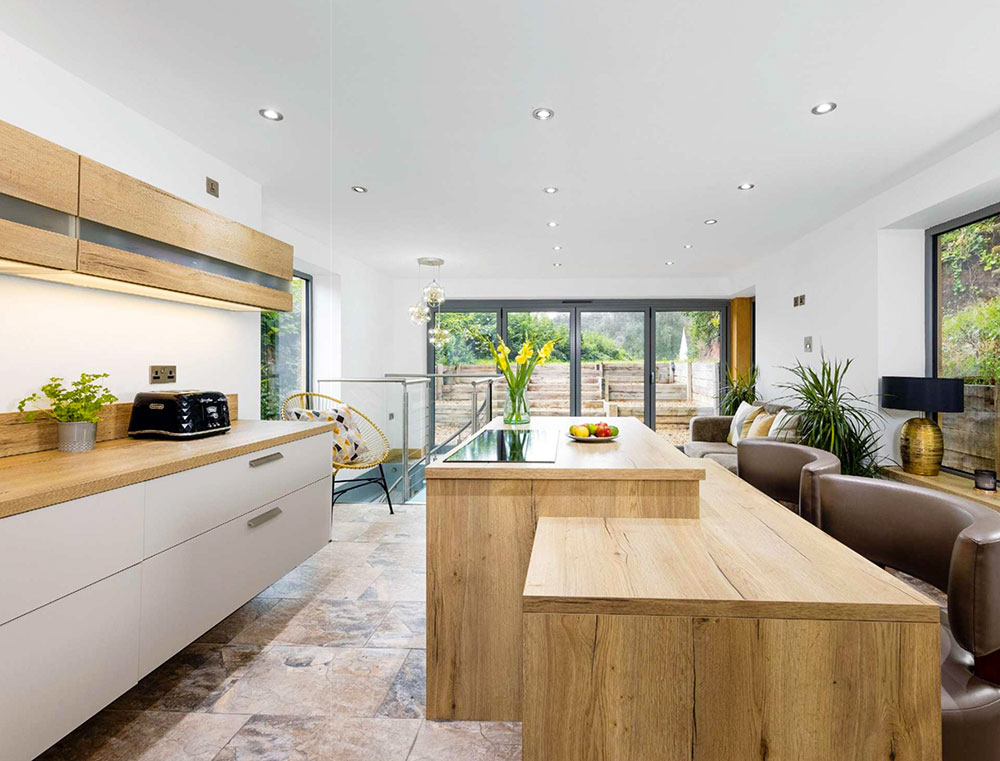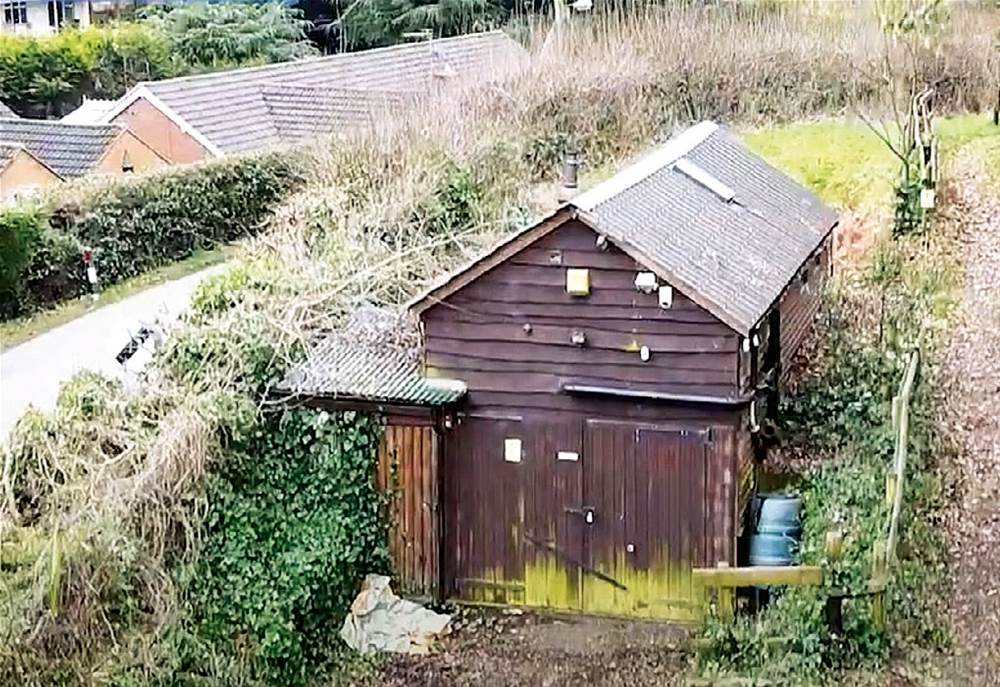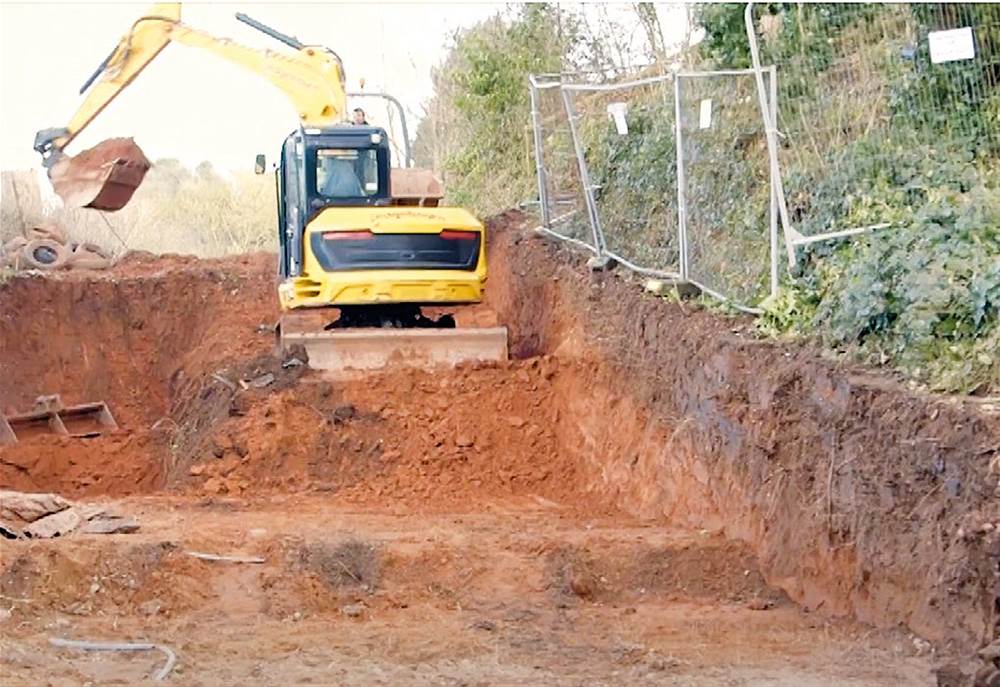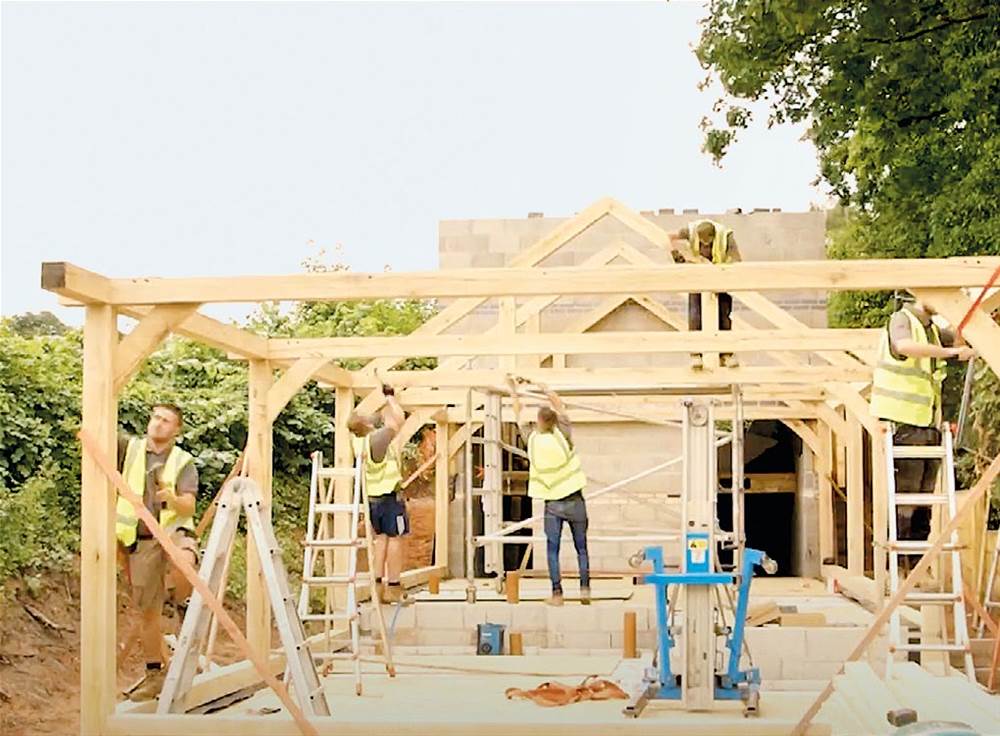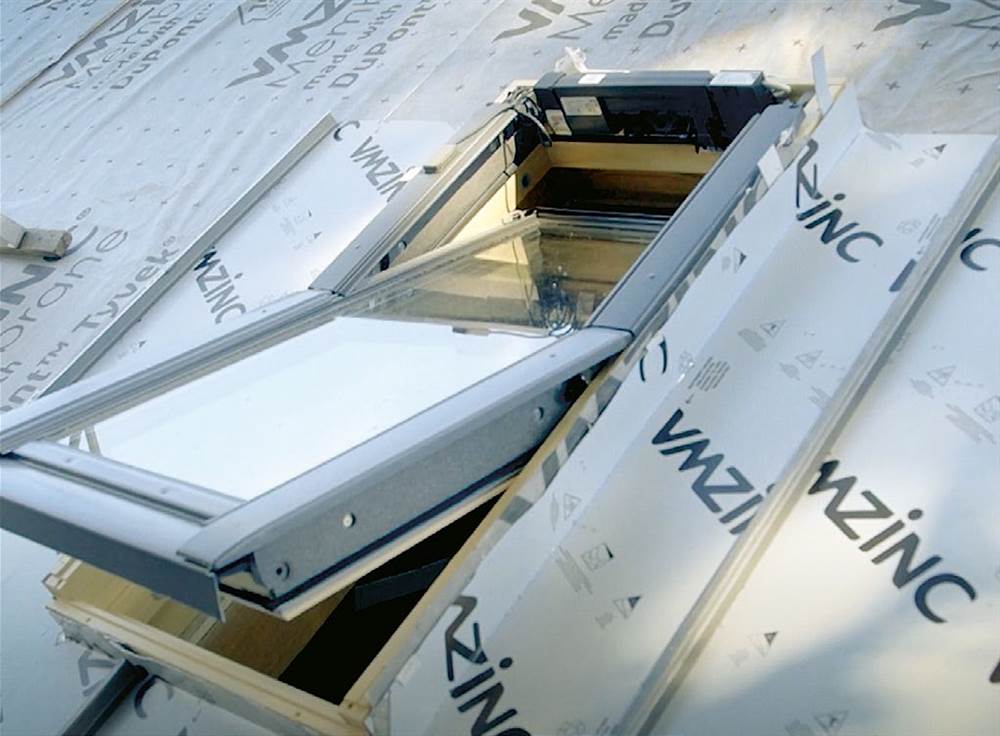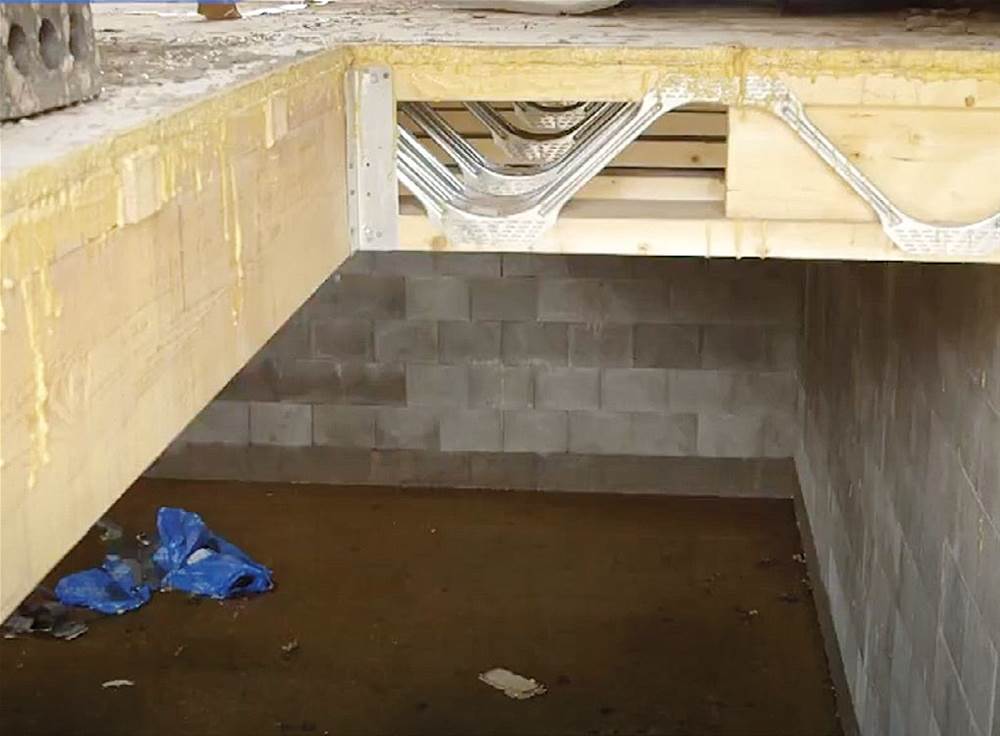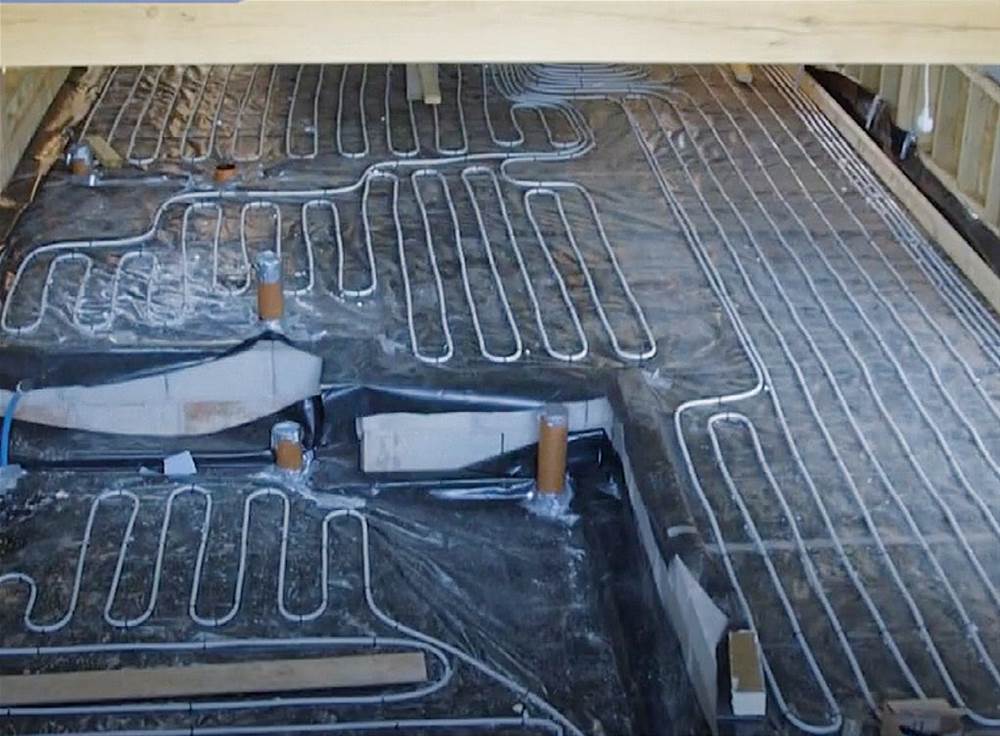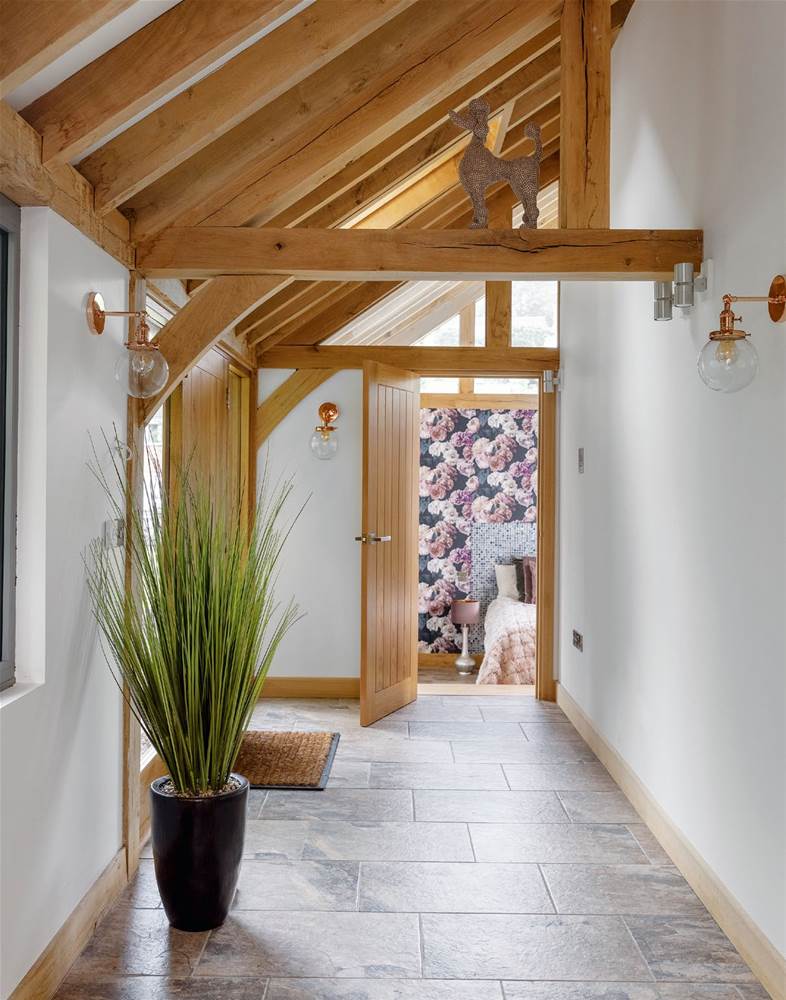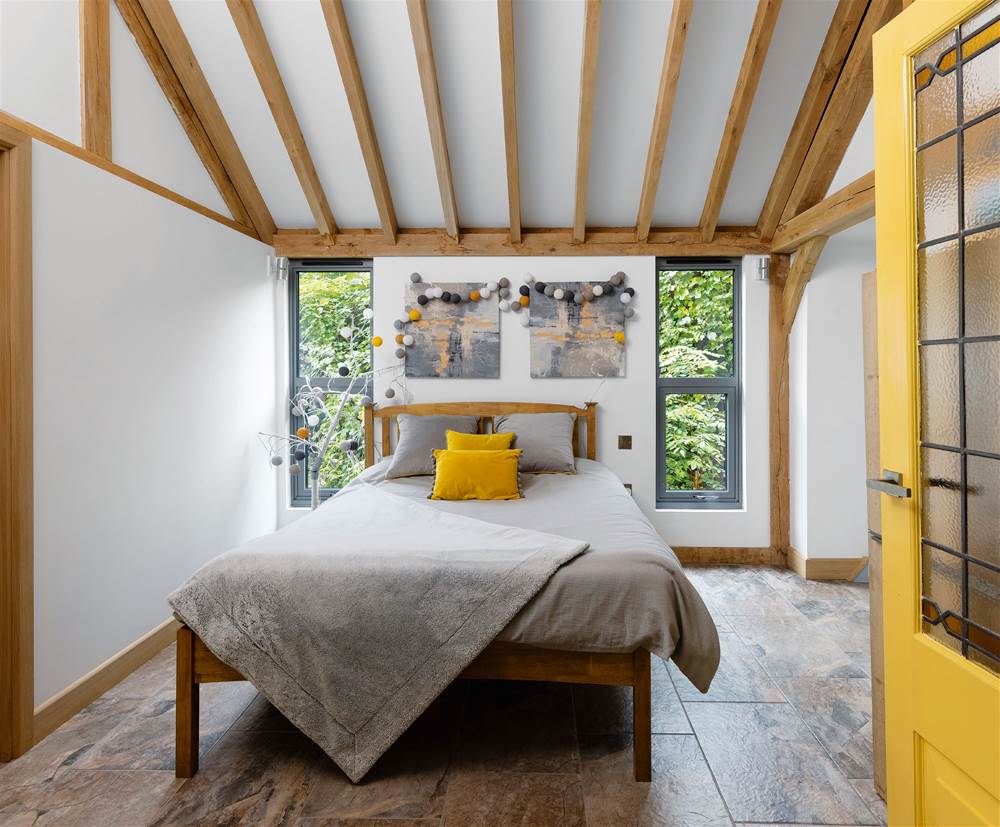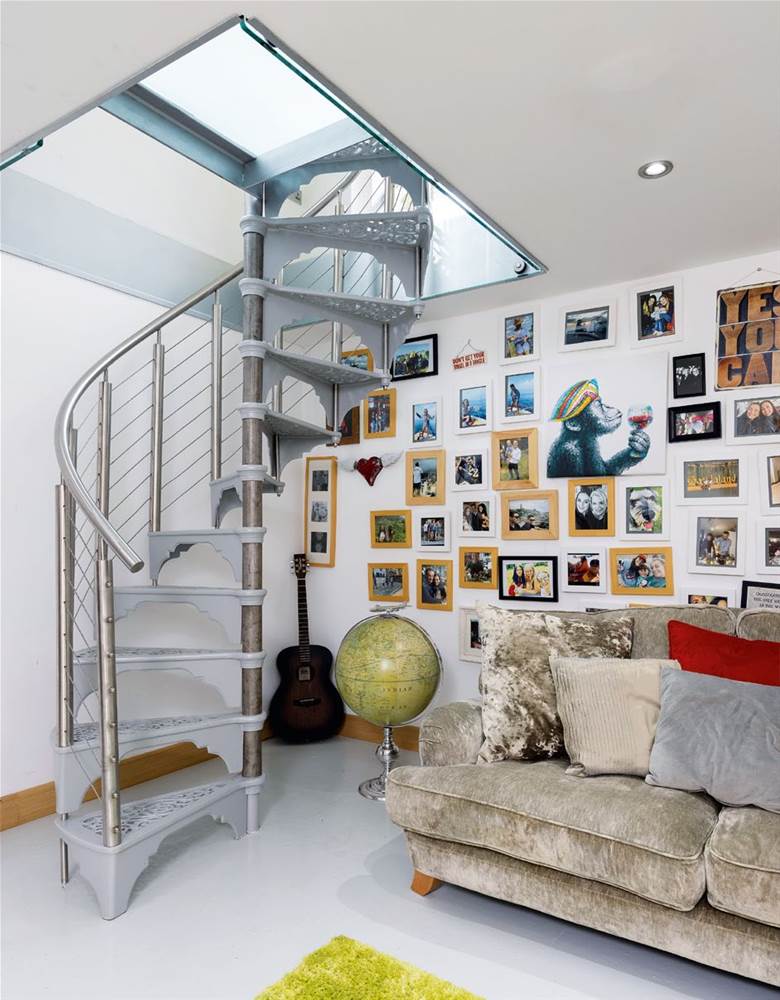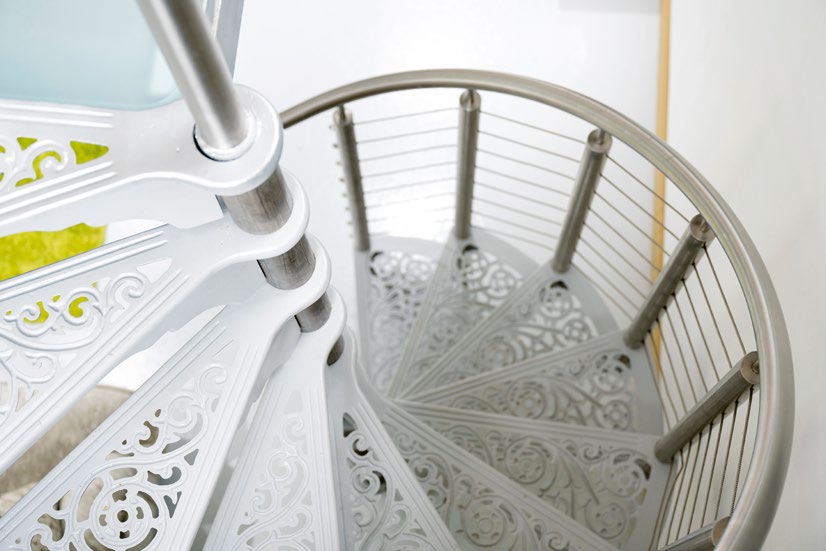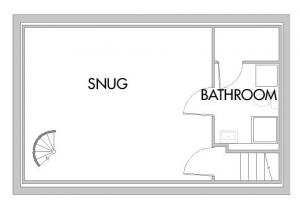RURAL GEM
After two gruelling years of planning, Patsy Parr took just 22 weeks to complete her first self-build – a modern take on a traditional oak framed home, complete with a boutique vibe.
HOMEOWNER Patsy Parr
LOCATION Kinver
PROJECT ROUTE Project managed by owner
BUILD TIME 22 weeks
BUILD SIZE 130m2
BUILD COST £191,000
VALUE Unknown
WORDS Alison Wall
PHOTOGRAPHY Jeremy Philips
Build plot bought JULY 2017
Final stages of Planning Submitted SEPTEMBER 2017
Planning achieved SEPTEMBER 2019
Breaking Ground FEBRUARY 2020
Watertight shell JUNE 2020
First fix July 2020
Second fix AUGUST 2020
Decoration completed SEPTEMBER 2020
Landscaping SEPTEMBER 2020
Moved in OCTOBER 2020
Tucked away in the village of Kinver in Staffordshire is an award-winning timber-clad house that any self-builder would be proud to call home.
What you can’t tell from the contemporary exterior is the determination, passion and drive that led local 28-year-old Patsy Parr to take on this project and see it through many months of planning before being built during a pandemic lockdown, in less than six months, and for just £191,000
Patsy, then renting in the village with little chance of getting on the property ladder, first spotted the plot on an early-morning run. “We called up the estate agents who told us that we had no chance as they had been inundated and it was sold subject to contract,” she says. “I decided we wouldn’t give up, so we went on the wait list and shot over to their office when we heard the sale had fallen through.” Her tenacity paid off and Patsy went on to buy the sloping parcel of land with its 50-plus trees. Luckily, the plot (nearly two acres in total) had an old timber and block workshop and cabin on it, with water and electricity, from the time it housed tourist tea rooms.
PLANNING RESTRICTIONS
Helped by family members, Patsy then spent two gruelling years Getting her proposals through planning, dealing with restrictions on everything from height to footprint size and choice of building materials. She even reworked the designs to change the position Of the house from the top of the site to the bottom.
“I literally wake up every morning and pinch myself. I can’t get over that I live here”
“The planning process was harder than the actual building process,” says Patsy. “I build huge stage sets and festival sets for a living, so to me the construction part just didn’t feel like a challenge—it was just like doing an event.”
Patsy might be underestimating her achievements here. In just 22 weeks, she successfully project managed her very first self-build, despite the pandemic. “We did have a bit of a wobble at the start of lockdown – I think everyone did – but we all worked round it really well and the team were brilliant,” she says. “We had a few gaps because of Covid and I think we would have perhaps gone even faster if it wasn’t for that, as it slowed down with getting materials and the workforce.”
Working with local oak frame company Enville Oak and contractor Chris Longmore she’s built a single-storey oak framed home at the front, sitting on a concrete slab foundation. At the rear is a two-storey blockwork section cut into the hillside with a Stepoc retaining wall system. This rear section houses the ground-floor kitchen, and basement snug, reached via two staircases from the ground floor. The contractors waterproofed the below-ground space using Everbuild Black Jack damp-proof membrane.
Cleverly, Patsy clad the whole exterior in timber, thus suggesting a whole-house oak frame construction without needing a large budget. “We also chose a modern standing seam zinc roof, which is sustainable and beautiful. I knew that I didn’t want a very traditional look that you can sometimes get with oak frame. I also went extra large on all of the windows, and spent a lot of my budget here, so the windows are huge and none are standard size. As this area is special, we wanted to be able to see outside from as many places as possible.”
TIGHT BUDGET
The construction may have gone smoothly, but working to a tight budget, even for a small two- bedroomed house, was no picnic.
“The budget was so extreme that we had to stick to — in the end we did it for El 91,000. Every penny mattered,” she says. Remarkably, given these constraints, she’s managed to install an air source heat pump and a fire suppression misting system for the open-plan kitchen and escape routes; eventually the flat roof on the blockwork section will become a green roof.
“We did have some nail-biting moments on site, though, such as when plastering costs doubled and I thought I couldn’t afford to plaster. That really slows you down because if you can’t get the walls plastered it’s a critical point. I’d already booked the plastering crew, so I needed to buy the stuff for them to do it.”
Another tricky moment was finding the money for the kitchen. “I didn’t actually realise how expensive kitchens are,” she admits. But she found her dream kitchen on Facebook Marketplace for just “The sellers just showed us a photograph of it and I thought — it looks great in the picture, let’s have it. It was a brand-new German kitchen on its way to an exhibition that was cancelled due to Covid. The appliances alone were worth more than the price I paid for the kitchen.”
Now that Patsy is settled into her new home, which she describes as having a ’boutique hotel’ feel, she’s busy with plans for the garden: “We’ve done loads of additional planting, and added hedgehog houses,” she says. “We’re hoping to have a beehive next year in the summer.” Still, with external works and decorating complete, she can afford to relax and enjoy her first home. “I literally wake up every morning and pinch myself. I can’t get over that I live here. It’s like a dream come true.”
Patsy spotted the plot, complete with old workshop and cabin, when out for a run. It would be two years before she could begin her build, slowed by planning.
The workshop was demolished and a huge trench dug to find the original electrical wiring so that the
groundworkers could safely avoid it.
The two-storey blockwork part of the build was erected first, constructed from a Stepoc retaining wall system; then the single-storey oak frame was erected.
The oak frame was fitted with a zinc roof with preformed insulated panels. The reflective nature of the zinc gives its name to the house: Little Gem.
The mezzanine floor for the kitchen, housed in the blockwork part of the house, uses engineered Posi-Joists.
A wet underfloor heating system was installed throughout and is powered by an air source heat pump.
OAK-FRAMED ENTRANCE
Patsy allowed plenty of space for a generous oak-framed hallway and circulation space. The wall lights were reclaimed from a barber shop that was closing down; the double stained-glass doors (below) were another reclamation find, this time from a rectory.
THE DETAILS
Acced via the kitchen, this spiral staircase is one of two staircases leading to the lower-ground-floor snug.
THE PLANS
GROUND FLOOR
LOWER GROUND FLOOR
SUPPLIERS
DESIGN ARCHITECT Andrea Millner: 07815 743238
ARCHITECT Eclipse Architecture: 01384 357740
MAIN CONTRACTOR Chris Longmore: www.chris-longmore.co.uk
OAK FRAME AND EXTERIOR CLADDING Enville Oak: unvw.envilleoakltd.com
FLOORING Ian Bristow Tiling: 07890 325208
WINDOWS Stourbridge Windows: 01384 431828
DOORS Howdens: www.howdens.com
FIRE SAFETY Plumis: www.plumis.co.uk
COSTS
KITCHEN £5,000
BATHROOMS £15,000
FLOORING £7,000
PLUMBING £5,000
ZINC ROOF £18,000
ELECTRIC HEAT AND LIGHTS £14,900
TIMBER FRAME AND WINDOW FITTING £55,200
GROUNDWORKS AND SCREED £49,800

